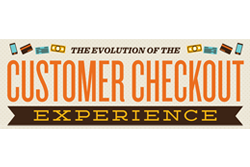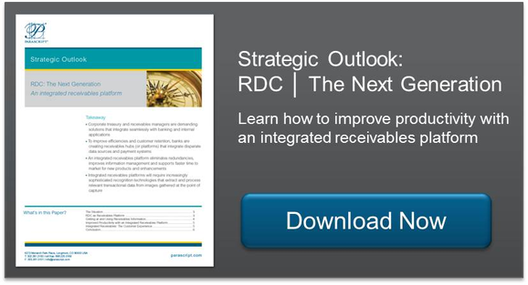Regardless of whether or not you are a bank offering lockbox remittance solutions or a corporate receivables department collecting and reconciling your incomethe future of remittance processing can be summed up with one word: MORE. More payment types. More back-end integration. More complication. And more automation tools required to manage it all.
 Merchant Warehouse put together an Evolution of Payments Infographic highlighting how payments have evolved over the last several decades. Can you believe that in 1995 only 2% of shoppers used debit cards and 8% used credit cards? Switching to B2B payments, did you ever think youd be capturing a business transaction via a Square device on a phone?
Merchant Warehouse put together an Evolution of Payments Infographic highlighting how payments have evolved over the last several decades. Can you believe that in 1995 only 2% of shoppers used debit cards and 8% used credit cards? Switching to B2B payments, did you ever think youd be capturing a business transaction via a Square device on a phone?
Ultimately, dollars are continuing to diffuse across more channels, with ACH and checks managing the largest in transaction value and a myriad of other payment types (many new) consuming a lot of volume but much lower value.
So why are we putting ourselves through all the headache? For the customers of course! This applies in B2C and B2B. However B2B has some nuances that are uniqueand present serious obstacles to straight-through processing. No matter how fast businesses collect a payment, it is nearly worthless without the associated remittance data (what account, what items, terms, etc). If youre a distributor, this means you can send Square devices out with your delivery trucks and collect card payments on the spotbut it could take days to get the remittance instructions (which can be as formal as a slip, or as basic as a napkin) back into the hands of accounting. Or perhaps the customer sends the remittance instructions in an email.
We believe this is a dramatic inhibitor in time to cash, and are working with Aite Group homepage to quantify the size of this problem. This research will be available around May. Sign up for our newsletter to learn when it becomes available.
Using the distributor example above, what can be done to enable straight through processing? Given the onboard technology available in smartphones, one option would be to take an image of the remittance document and apply recognition and any necessary keying or validation to it on the spot. The payment is now received and becomes useful in hours, not days.
Now, multiply this example times the number of new payment types available and potential combinations from which to receive a payment and a remittance. While convenient on the front-end, it puts a lot of stress on the back-end. All of the data from these payment types need to be aggregated, tracked and reported. In larger organizations (enterprises, banks) this has become siloed over the years. And even more complicated, there might be a mainframe involved. Smaller companies may have a deployment speed advantage but may be quickly overwhelmed by lack of process integrity. Lets not kid ourselves, theres a lot of work involved here.
All this screams the need for technology platformsunified remittance processing solutions that are easier to snap new payment types into. Weve been calling the concept an Integrated Receivables Hub, surely there are more (and better) names for a similar concept. In the enterprise this would act as an extendable enterprise software bus. Transactions from various capture points enter, data is normalized, exceptions are managed, and transactions exit. While relatively complicated, SMBs should be able to capitalize on a similar concept by partnering with SaaS and lockbox service providers.
Recognition technology will play an expanding role in enabling these hubs. Recognition will be responsible for capturing and making useful the information on a payment (check) or the remittance and any associated data from any multitude of distributed and centralized devices, ranging from mobile phones, to RDC units, distributed scan stations or batch scanners.
Parascript is collecting use-cases on this growing need. If you have one youd like to share, please send us an email at partner@parascript.com.




